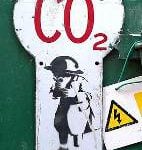When the Carbon Disclosure Project (CDP) first launched, eight years ago, it was a relatively simple idea: to invite the world’s biggest companies to report their carbon emissions and make them public. This reporting, on behalf of the world’s biggest investors, aimed to raise awareness – on both sides – of the risks associated with failing to manage emissions. The first report was launched two years later.
Last year, when the sixth annual report was published, the CDP involved most the world’s important investment funds, including the Chinese sovereign wealth fund China Investment Corporation, with a combined total of US$57 trillion under management. It is largely the power of these investors that has ensured the growth in the number and size of the companies that now respond. In 2007, CDP published emissions data for 2,400 of the world's largest corporations, accounting for 26% of global anthropogenic emissions. This year, 3,000 corporations, including such global giants as WalMart, General Electric Company (GE), Tesco, Cadbury Schweppes, Procter & Gamble and many others, have been invited to respond. Their reports, according to CDP’s CEO Paul Dickinson, represent 40% of anthropogenic emissions.
CDP is a philanthropic project that operates from London and New York, employing only 27 people. The global influence of the project and the emissions database it has built represent one of the biggest stores of knowledge of carbon emissions in the world, and Paul Dickinson believes the CDP is rapidly improving both its methodology and the quality of its data.
When the project began, accounting for carbon emissions was a new idea. Now it is evolving into a globally standard system. “We have improved the questionnaire each year,” he said, “which goes alongside our work on accounting standards. We believe that what gets measured gets managed. These companies are now reporting, evaluating and preparing for a carbon-constrained world.”
The importance of the CDP has won it endorsements from such figures as former US president Bill Clinton, German chancellor Angela Merkel and Britain’s former prime minister Tony Blair. The scope of the project has grown not only in size, but also in ambition. As companies join the scheme, accounting for their emissions forces them to examine their energy efficiency. But reporting is voluntary and not all the emissions accounts are independently verified. Critics also point out that since there is still no universally agreed methodology or standard, it remains difficult to compare company performances, a problem the CDP is trying to address.
“There have been literally centuries of financial evolution, with cycles of reporting over hundreds of years,” said Dickinson, “and though there are agreed principles there are still no global money standards. Emissions accounting is very new, but there are fast emerging principles in carbon accounting, and carbon accounting is beginning to migrate into statutory reports and accounts. There is still no legal obligation to account for carbon emissions, outside the European Union Emissions Trading Scheme (EU ETS), which involves 5,000 companies and 1,000 facilities.” It takes time, he said, but carbon accounting is evolving very fast. “We have come a very long way in six years. We are trying to super-accelerate the development.”
“The Greenhouse Gas Protocol,” he explained, “identified three scopes.” The Greenhouse Gas Protocol, developed jointly by the World Business Council for Sustainable Development and the World Resources Institute, is the most widely used international accounting tool for government and business leaders to understand, quantify and manage greenhouse-gas (GHG) emissions, and provides the accounting framework for nearly every GHG standard and program in the world.
“The first two scopes,” said Dickinson, “are fossils fuels burned and electricity purchased. We are rapidly moving towards a protocol in these two. Scope three is everything else: waste disposal, travel, the supply chain etc.”
The CDP, Dickinson admits, is not in a position to verify the data that is reported to them. But he argues that the institutional investors who sign the request for information that goes out to the companies are so large and important that it keeps the reporting honest. “We believe that companies understand that 385 institutional investors should not be misled, so the information provided to investors should be of high quality and not misleading. A significant majority of companies now make their data publicly available, so peer pressure comes into play – and, increasingly, the companies are presenting audited data and asking supply chains to report their emissions.”
Besides the public and investor pressure, he said, there are advantages to companies that manage their emissions. “Companies understand that emissions are correlated with waste, so managing emissions increases energy efficiency – and it’s good to demonstrate to investors and to consumers that they are efficient. It’s a really important part of investor and customer relations in the twenty-first century. A company that takes part demonstrates that it is managing the risks and opportunities of climate change. It’s important for efficiency, cost saving and business development. As far as the supply chain goes, purchasers are also interested in efficiency and 33 major companies, including Carrrefour and Proctor and Gamble, are sending questionnaires to their supply chains.”
The response from Chinese companies, until now, has been among the lowest in the project, but Dickinson believes that progressive Chinese companies will increasingly understand the importance of participation.
“Chinese companies will have to understand that purchasers expect energy efficiency,” he said. “And it would be naïve to expect that energy-intensive businesses in the US will allow themselves to be undercut by others that were not disclosing their emissions. Global accounting is happening. You can put a hood over your head and pretend that it’s not happening, or you can prepare for it. Chinese companies want to succeed in the global marketplace, and with energy prices rising there is an increasing recognition in world markets that investors want to know that companies understand the issues. Consumers are demonstrating that they care about these issues and consumer choice is directly influencing investors.”
How many Chinese companies have got the message will be revealed in this year’s report, and in the China country report, released in October.
Isabel Hilton is editor of chinadialogue
Homepage photo by **Mary**




